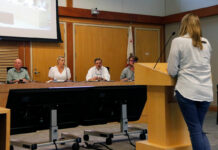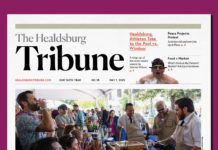As the weather heats up, our thoughts turn to water. As in, where can I hang out on the Russian River? How can I save water in my garden, while still keeping it beautiful? And where can I volunteer to help keep the river and other local waterways clean?
There is now one easy way to find the answers to these questions (and more). On July 1, the Russian River Watershed Association (RRWA) launched an expanded interactive map that allows users to find locations of key watershed resources, including:
• River Access Locations: Most access to the Russian River is on private land. The map shows public locations where people can legally get to the river.
• Water Quality Monitoring Locations: The river and regional lakes are beautiful places to swim, kayak and canoe. But occasionally there may be isolated water quality problems. The map shows monitoring locations and is linked to up-to-date test results.
• Watershed-Friendly Demonstration Gardens: In water-scarce California, it’s always important to irrigate efficiently and focus on drought-tolerant plants. In the Russian River watershed, it’s also important to minimize the use of garden chemicals and reduce the amount of sediment that can end up in creeks, streams and ultimately the river. The map highlights gardens that demonstrate water-wise and watershed-friendly landscaping.
• Watershed Cleanup Locations: In September, before the rainy season begins and when water levels in the Russian River and creeks are usually very low, several cities and organizations hold watershed clean-up events. The map can help you find a nearby clean-up activity and provide contact information.
• Safe Medicine Drop Off Locations: Most of us have medicine cabinets full of dated or no longer needed drugs. Medicine that is flushed ends up in sewer treatment plants, and can be nearly impossible to remove from the recycled water. For several years, RRWA has been working with local pharmacies and healthcare providers to develop a network of locations where medicine can be safely and securely disposed. To date, more than 44,000 pounds of medicine has been dropped off at these sites, which can now be easily found on the interactive map.
• Waterways: Are you curious about the name of a nearby creek? The map includes 20 major tributaries (the big creeks that feed the Russian River) and 164 smaller creeks (that feed the tributaries) showing the rich, complex network that makes the Russian River watershed such a beautiful place to live and a rich ecosystem for plants and animals.
Go to www.rrwatershed.org and click on the “Interactive Map” tab to explore. In addition to providing important information, it’s a great way to learn more about your watershed.
Ann DuBay is the Principal Program Specialist of the Sonoma County Water Agency and Virginia Porter, Executive Director of RRWA. RRWA (www.rrwatershed.org) is an association of local public agencies in the Russian River Watershed that have come together to coordinate regional programs for clean water, fisheries restoration, and watershed enhancement.








